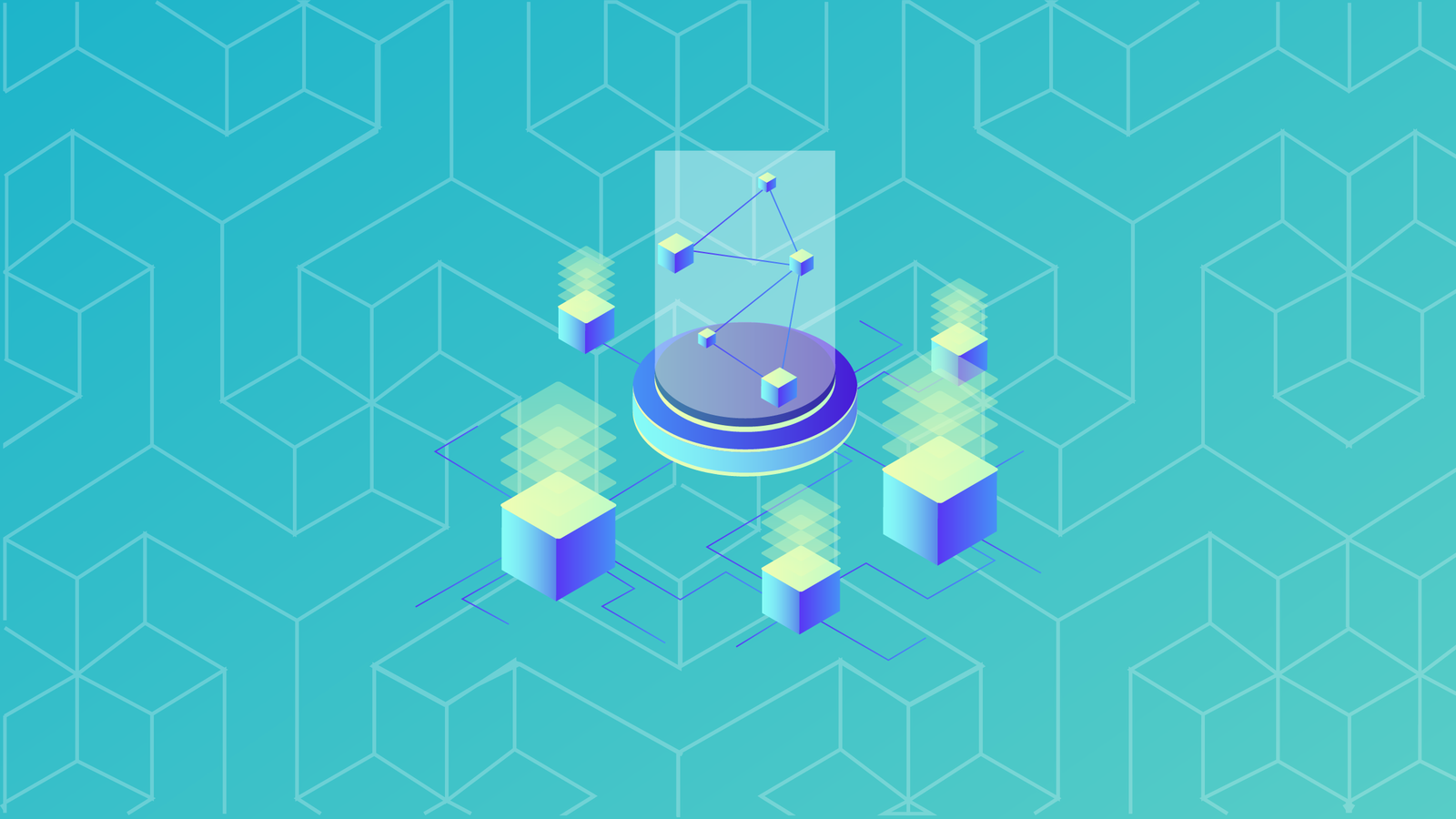Web3 is the next generation of the decentralized internet, built on the blockchain. It is an open source platform that allows developers to create and deploy decentralized applications (dApps) and smart contracts. Web3 removes the need for a centralized authority or intermediary, allowing users to securely interact directly with each other in a trustless manner. Web3 also provides a platform for developers to build distributed applications (dApps) that have no single point of failure and are secured by cryptographic algorithms. With Web3, users have more control over their data and digital assets while developers are able to build more secure and efficient applications.
Web3 Decentralized Internet on the blockchain is a revolutionary technology that has the potential to completely revolutionize how we interact with the internet. With its decentralization, censorship resistance, and privacy features, it has the potential to empower individuals, organizations, and governments to conduct business and interact more securely and freely. While there are still some challenges to be addressed, Web3 is undoubtedly the future of the internet and its adoption will continue to grow in the coming years.

How to Get Started With Web3 Decentralized Internet on the Blockchain
The emergence of blockchain technology has ushered in a new era of the decentralized internet, often referred to as Web
1. Web3 is an exciting new way to interact with digital applications and services that are built on top of distributed ledger technology. This new technology has the potential to revolutionize the way we interact with the digital world.
If you’re interested in getting started with Web3, the first step is to understand what it is, and how it works. Web3 is a decentralized network of computers, or nodes, that are connected to a blockchain. Each node on the network stores a copy of the blockchain’s ledger, and each node is responsible for verifying and processing transactions on the network. This makes Web3 secure and resilient, as there is no central point of failure or control.
The next step is to find a way to access the Web3 network. This can be done through web browsers, such as Chrome, Firefox, and Brave, which are all compatible with Web
2. Alternatively, you can use a crypto wallet, such as MetaMask, to access the Web3 network.
Once you’re connected to the Web3 network, you can begin interacting with decentralized applications (dApps). These dApps are built on top of the blockchain and allow users to interact with digital services without the need for a centralized server or intermediary. Examples of popular dApps include games, exchanges, and social networks.
Finally, the last step is to familiarize yourself with the different protocols and technologies that make up the Web3 ecosystem. This includes learning about the most popular blockchain networks, such as Ethereum and EOS, as well as the different programming languages used to build decentralized applications.
By understanding the basics of Web3, you can start to explore the many possibilities of the decentralized internet. With Web3, you can access and interact with services without relying on a centralized server, giving you more control and security over your data and digital assets.
The Benefits of a Decentralized Web3 Internet
Web3 Internet on the blockchain by BitlyFool.com The introduction of a decentralized web3 Internet has revolutionized the way we interact with the Internet. By removing centralized control and allowing users to take control of their own data, the Internet has become a more secure, transparent, and independent platform. In this article, we will explore the benefits of a decentralized web3 Internet. Firstly, the decentralized nature of web3 Internet ensures that users are in control of their own data. This means that users have the power to share and access information in a secure and transparent manner. With a decentralized web3 Internet, users can be sure that their data is secure and that it is not being manipulated or censored by a third party. This makes it an ideal platform for individuals and businesses who value their privacy and security. Secondly, a decentralized web3 Internet eliminates the need for intermediaries. This means that users can interact directly with one another, without needing to rely on a third-party intermediary. This eliminates the need for costly transaction fees and reduces the risk of fraud or manipulation. Thirdly, the decentralized web3 Internet is more resistant to censorship. Because users are in control of their own data, they are able to choose who they interact with and what type of content they share. This makes it more difficult for governments or other entities to censor or manipulate the data that is shared on the Internet. Finally, a decentralized web3 Internet is more efficient. By eliminating the need for intermediaries, users can interact more quickly and effectively. This reduces the time and cost associated with traditional online transactions, making it an attractive option for businesses and individuals. In conclusion, the benefits of a decentralized web3 Internet are numerous. By removing centralized control and allowing users to take control of their own data, the Internet has become a more secure, transparent, and independent platform. Furthermore, it eliminates the need for intermediaries, making it more resistant to censorship and more efficient. For these reasons, a decentralized web3 Internet is an attractive option for businesses and individuals who value their privacy and security.
Exploring the Different DApps and Smart Contracts of Web3
As the world moves towards a more digitalized economy, the use of decentralized applications (DApps) and smart contracts are becoming increasingly popular. Web3 is a decentralized platform that provides a range of services and features, including DApps and smart contracts. Web3 is a platform that enables developers to create decentralized applications (DApps) and smart contracts which are built on a blockchain. A DApp is an open-source software application that runs on a distributed ledger. It is a distributed, decentralized application that runs on a peer-to-peer network and does not require a central authority to operate. DApps provide a range of services, such as financial services, gaming, and social networks. The advantage of using DApps is that they are decentralized and secure, as the data stored on the blockchain is immutable and can only be modified or deleted by the consensus of the network. Smart contracts are self-executing contracts that are stored on a blockchain. They are written in a computer language and are designed to automatically execute predefined actions when certain conditions are met. Smart contracts can be used for a variety of purposes, such as transferring funds, creating digital identities, and enforcing contracts. Web3 provides a range of services and features that make it an attractive platform for developers. It provides an easy-to-use platform that allows developers to build and deploy DApps and smart contracts quickly and securely. Furthermore, Web3 supports a range of languages and frameworks, such as Solidity and Truffle, which makes it easy for developers to create their own projects. In conclusion, Web3 is an important platform for developers that provides a range of services and features, including DApps and smart contracts. The platform is secure, easy to use, and provides a range of languages and frameworks that make it an attractive platform for developers.
Analyzing the Security Risks and Benefits of Web3 Decentralized Internet
The emergence of Web3 decentralized internet, commonly referred to as the “next-generation” of web technology, has opened up a wealth of opportunities for users to access and interact with information and services in a secure and decentralized manner. As with any technology, however, there are both risks and benefits associated with using Web
1. In this article, we will discuss the security risks and benefits of Web3 decentralized internet.
Security Risks
The security risks associated with Web3 are mainly due to the fact that it is decentralized. As data is stored on multiple nodes rather than a single centralized server, it is vulnerable to attack from malicious actors. Additionally, as the technology is still relatively new, there is limited understanding of how it works and how to protect it from attack. This can lead to vulnerabilities such as smart contract bugs or unsecured transactions, which can result in the loss of funds or data.
Another risk associated with Web3 is that, as it is decentralized, there is no single authority to regulate or enforce its use. This means that users must be extra vigilant when using the technology and take extra precautions to protect their data, such as using strong passwords and two-factor authentication.
Benefits
Despite the security risks associated with Web3, there are also many benefits. As the technology is decentralized, it is highly resilient to attack, meaning that it can withstand attempts to disrupt or take down the network. Additionally, as no single authority controls the network, users have full control over how their data is used and who has access to it.
Furthermore, Web3 offers users the ability to access services and information without having to trust a third party. This means that users can interact with each other directly, without having to rely on a centralized entity. This makes it ideal for applications such as finance, healthcare and other industries where trust is essential.
Conclusion
Overall, Web3 decentralized internet offers a range of benefits, but also carries some security risks. It is important for users to understand these risks and take the necessary measures to protect their data and funds. With the right precautions, however, Web3 can be used securely and efficiently to access services and information in a secure, decentralized manner.
Understanding the Impact of Web3 Decentralized Internet on Businesses and Consumers
The advent of Web3 decentralized internet has had a significant impact on businesses and consumers alike. Web3 is a new type of internet, built on decentralized networks and open-source protocols. This new infrastructure provides a more secure, trustless, and transparent platform for users to interact with the internet. For businesses, Web3 technology can provide a more secure, cost-effective, and reliable platform for conducting transactions and interacting with customers. By utilizing Web3’s decentralized, open-source protocols, businesses can create and deploy applications that are more secure and resilient to external interference. For example, blockchain technology can provide an immutable, secure ledger, enabling businesses to store and verify data without the need for a centralized third party. Furthermore, businesses can leverage Web3’s distributed computing power to improve scalability and reduce costs. By making use of the decentralized infrastructure, businesses can access more computing power and reduce their reliance on expensive centralized servers. This can reduce their overall infrastructure costs and help them become more competitive in the market. For consumers, Web3 offers a more secure and private internet experience. By leveraging the trustless and resilient infrastructure, users can access the web without fear of their data being compromised or stolen. Additionally, users can access applications that are more secure and private, as they are hosted on a distributed network of nodes. This also reduces reliance on centralized service providers and helps protect users from censorship. Overall, Web3 decentralized internet has had a significant impact on businesses and consumers. By providing a more secure, cost-effective, and private platform, Web3 offers a more reliable and resilient way of interacting with the internet. This technology is set to revolutionize the way businesses and consumers interact with the web, and is sure to have a lasting impact for years to come.





